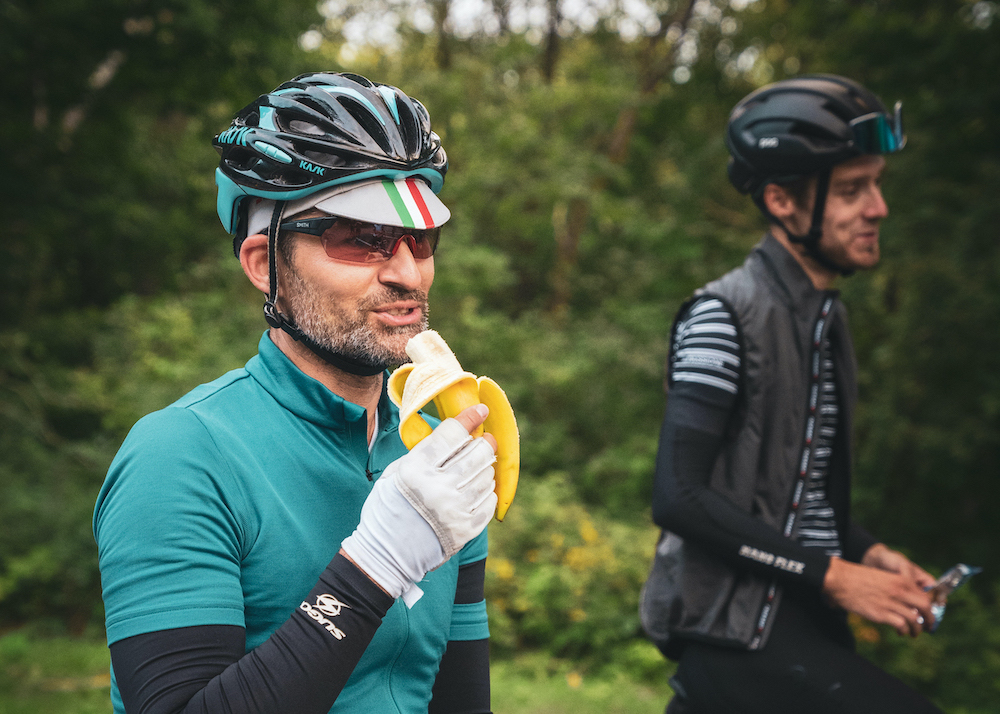Today we are talking about CARBOHYDRATES – the macro that comprises the largest portion of our diet. In general, we need to change our perspective on carbs; when used correctly they’re our friends, not the enemy! Carbs are especially important for endurance athletes who need to maintain high-energy outputs for long periods of time. Without adequate amounts you’ll find yourself hitting a wall in no time!
Carbohydrates make up one of the three basic components of food and come in various forms. Some are easily digested which provides an immediate source of energy, others are resistant to breakdown which in turn stabilizes the digestive system for time-released energy. Carbs typically come from plants and are produced through photosynthesis. Similar to us, plants require energy which they get from the carbs they produce. We get our carbs from eating plants from the following families: vegetables, fruits, legumes, and grains. We can also get carbs albeit less efficiently, from eating animal products. Like us, other animals eat carbs which are stored in their muscles, by eating their meat we are in turn gaining those carbs.
It is important to consider the quality of the carbohydrates that we consume. This is where the glycemic index (GI) comes into play. The GI ranks foods based on their effect on blood sugar levels, the scale ranges from a low of 1 to a high of 100+. A low rating indicates the food hardly raises blood-sugar levels. High ratings are for foods that digest quickly, and rapidly elevate blood-sugar levels. Generally, healthy carbs maintain stable blood sugar levels and have a score of 55 or less on the GI scale. These healthy carbs are normally found in fiber-rich and whole-foods. That being said, there are benefits to eating foods with a higher GI rating. During exercise, eating high GI foods, like those found in energy gels are beneficial for an athlete as they provide an almost immediate source of glucose for the body to use. In the chart below you will find the GI scores of common sweeteners used in energy gels.
Carbohydrates can be broken down into two main categories, simple and complex. Simple carbs are sugars, further broken down into: monosaccharides, disaccharides, and oligosaccharides. Monosaccharides are one single sugar molecule and are rapidly digested and utilized by the body. Disaccharides are two sugar molecules linked together that can easily be broken down with an enzyme and a water molecule. Oligosaccharides are slightly larger and range between 3 to 20 sugar molecules linked together. Many of which cannot be digested by the small intestine, so they travel to the large intestine and feed the beneficial gut bacteria.
Simple carbs are sugars, further broken down into 3 categories: monosaccharides, disaccharides, and oligosaccharides. Monosaccharides are one single sugar molecule and are rapidly digested and utilized by the body. Disaccharides are two sugar molecules linked together that can easily be broken down with an enzyme and a water molecule. Oligosaccharides are slightly larger and range between 3 to 20 sugar molecules linked together. Many of which cannot be digested by the small intestine, so they travel to the large intestine and feed the beneficial gut bacteria. Generally speaking, athletes are relying on simple sugars (mono- and di-saccharides) to provide quick fuel during exercise. These sugars are easily digested and rapidly elevate glucose levels.
Complex carbs, also known as polysaccharides contain several hundred sugar molecules and must be heavily digested before they are absorbed. They are subdivided into non-starches and starches. Non-starches are composed of celluloses and hemicelluloses. Starches are broken down into amylopectin and glycogen and they maintain more consistent blood sugar levels. Glycogen is stored in the muscles and liver and it is broken down into glucose to meet energy requirements. It’s important for athletes to replenish glycogen reserves by eating a variety of low GI foods like oats, sweet potatoes, brown rice, beans, green vegetables, and nuts.
Carbs are the best source of energy for endurance athletes. Consuming simple sugars during exercise is beneficial because they provide quick fuel for us to use. This is because simple carbs are easily digested thus providing the body with readily available glucose. After exercise, it’s important to consume good quality carbs with a low GI rating to replenish the glycogen stores in the muscles and liver.
Thanks for taking the time to check out my article. As always feel free to reach out if you have any questions, or if you’re looking to seek nutritional guidance.

